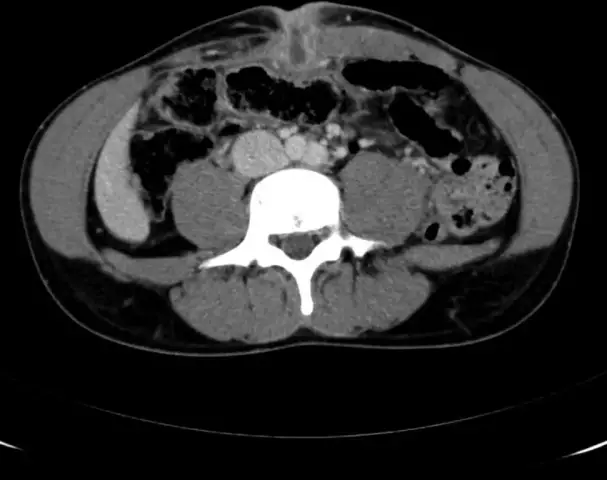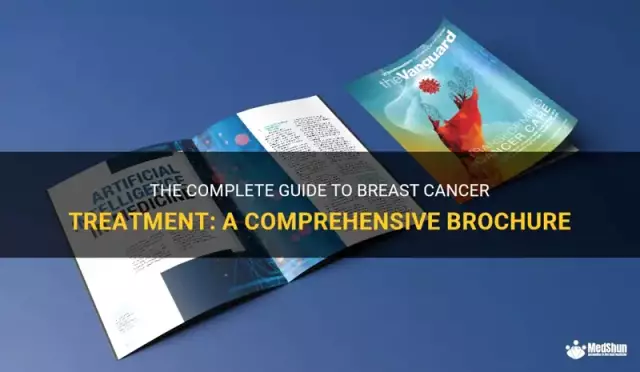- Author Rachel Wainwright [email protected].
- Public 2023-12-15 07:39.
- Last modified 2025-11-02 20:14.
Tailbone cyst

Among the large number of diseases that both women and men who are still at a fairly young age (up to 30 years old) suffer from, coccyx cyst is quite common. In medical science, this ailment has many names: dermal cyst, epithelial coccygeal passage, coccyx fistula or pilonidal sinus. The tailbone cyst belongs to a rather insidious disease and for a long time it may not give painful sensations at all and not manifest itself. You can determine the presence of a coccygeal passage yourself. In the area of the gluteal line (at a distance of no more than 10 cm from the anus), you can find a barely noticeable hole. In some patients, it is, on the contrary, deep, resembling a small funnel.
The main causes of coccyx cysts
As a result of the fact that the dermal cyst belongs to congenital diseases, the main cause of the coccyx cyst, as well as the manifestation of its painful sensations, is blockage of holes or mechanical injury. Such negative factors always entail such symptoms of a coccyx cyst, such as redness, unpleasant, sometimes even very acute pain. As a result, an irreversible inflammatory process occurs, provoking a disease of adipose tissue. After that, a new, already repeated hole appears on the body, which is called a purulent fistula. It occurs due to the fact that pus gradually comes out, breaking through the top layer of the skin.
It is also necessary to consult a doctor if symptoms of a coccyx cyst appear on the body, such as a slight elevation provoked by hypothermia or various respiratory diseases (for example, influenza).
If the patient already has an acute inflammation of the tailbone cyst, then it will certainly entail an increase in temperature, as well as severe pain. Often, the analyzed disease provokes some complications (the development of fistulas, skin eczema and purulent abscesses). People who have been suffering from a chronic stage of inflammation of the coccyx cyst for a long time experience constant discharge of pus from the epithelial coccygeal passage.
Diagnosing a coccygeal cyst
When diagnosing a coccyx cyst, healthcare professionals first of all try to distinguish it from rectal fistula and from osteomyelitis, which occurs in the bones of the sacrum. The main diagnostic method is a visual examination of the rectal mucosa. It can be done using a sigmoidoscope. In addition, this procedure cannot do without sounding. To determine whether a person really has a tailbone cyst disease, it is imperative to undergo an X-ray examination of the tailbone and sacrum.
Coccyx cyst treatment

It is possible to completely cure the coccyx fistula only with surgical intervention, since to date no other treatment methods have been found. The operation of the coccyx cyst is performed in order to extract the epithelial coccygeal passage from the body, as well as all its primary processes and openings. Radical treatment of the tailbone cyst is necessarily carried out in several stages:
- Removal of the coccyx cyst and the entire pathological focus, which is carried out without fail during a surgical operation;
- The next stage doctors direct already to make the wound formed after the removal of the coccyx cyst, as small as possible.
Thanks to the constant development of medical science, today it has become possible to carry out a coccyx cyst operation using a unique new technique that allows not only suturing wounds, but also performing the process of surgical intervention without causing painful sensations in the patient. It should also be noted that such a method of treatment enables the patient to easily endure the operation, quickly complete the rehabilitation period and start directly to a truly active lifestyle.
A significant advantage of coccyx cyst surgeries is that after them the disease almost never recurs. The disadvantages include a rather long wound healing process, which sometimes reaches six weeks.
The main postoperative recommendations that the patient must follow include:
- Strict observation by the patient's doctor during the first 5 hours after the completion of the operation.
- An hour later, the doctor conducts a secondary examination, during which he applies a new bandage. The patient should also receive detailed instructions on how to behave at home, what to exclude from the daily diet, and how to properly care for the wound. Only after the measures taken can the patient be released home.
- Approximately 48 hours after the operation, the patient can take warm baths. It is recommended to do this at least twice a day. By performing such actions, you can always improve your overall physical condition, as well as speed up the wound healing process. You should definitely remember that after completing the water procedures, it is necessary to change the dressing, and apply a special healing ointment (this can be Posterizan or Levomekol).
- In order to establish the correct process of wound healing, the patient must come to the clinic for examination at least once a week.
- For three weeks after removal of the tailbone cyst, the patient should not sit.
- Heavy objects must not be lifted for 4 weeks.
- After removing the stitches, the wound is washed every day with a hygienic shower.
- For 6 months, epilation should be done in the operated area.
YouTube video related to the article:
The information is generalized and provided for informational purposes only. At the first sign of illness, see your doctor. Self-medication is hazardous to health!






